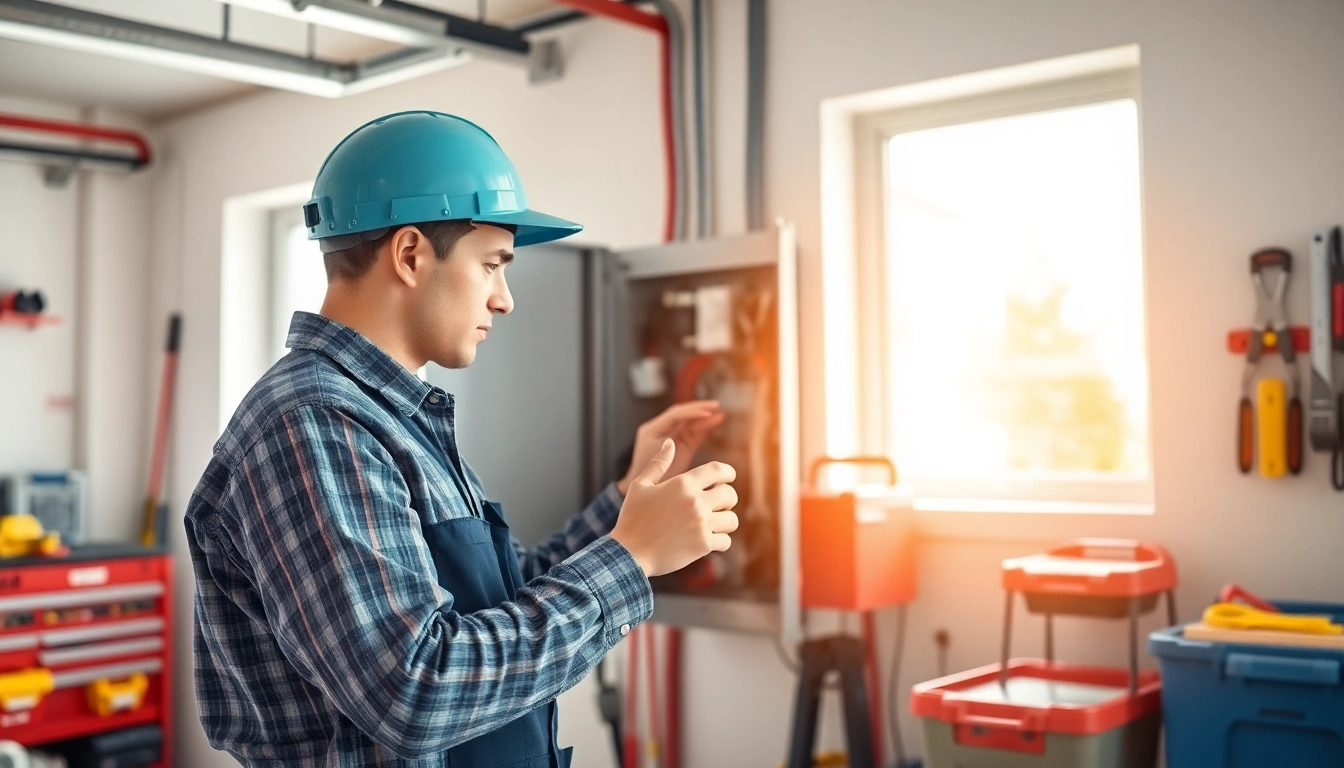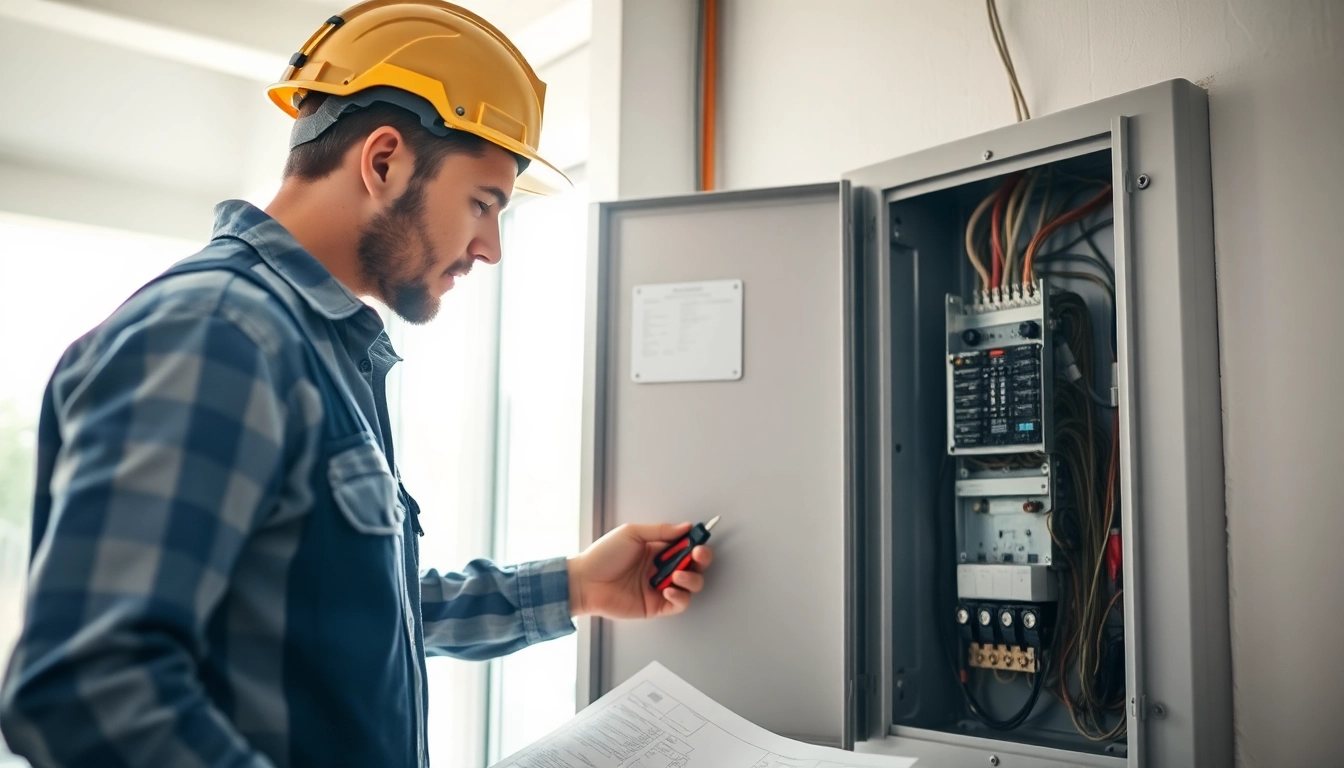Understanding Electrical Panel Upgrade
As homeowners, we often take for granted the electrical systems that power our daily lives. However, as technology advances and our energy needs evolve, it’s important to reassess our electrical systems, especially the Electrical Panel Upgrade. This article aims to provide a thorough understanding of when and why you should consider upgrading your electrical panel, alongside the various benefits, costs, and maintenance practices involved.
What is an Electrical Panel?
An electrical panel, often referred to as a circuit breaker box, is the hub of your home’s electrical system. It distributes electricity from your utility company to various circuits within your house, managing the flow of electricity to outlets, appliances, and lighting fixtures. Most modern homes require a panel that can accommodate a higher electrical load to meet the demands of today’s technology-heavy lifestyle.
Why Upgrade Your Electrical Panel?
An electrical panel upgrade can be a crucial step for many reasons. Over time, older panels may not be equipped to handle the electrical load required by modern appliances and devices, which increases the risk of overloading circuits. This not only leads to inconvenience but poses serious safety risks such as electrical fires. Upgrading your panel enhances reliability and ensures compliance with the latest safety standards.
Common Signs of a Panel That Needs Upgrading
- Flickering Lights: If your lights flicker or dim when you use other appliances, it could indicate that your electrical panel is overloaded.
- Frequent Circuit Breaker Trips: Regularly tripping breakers is a strong signal that your panel can’t handle the supply required for your home.
- Burning Odors or Discoloration: The smell of burning or the presence of scorch marks near the panel mean immediate attention is required.
- Old Fuse Box: If you have a fuse box instead of a circuit breaker, it may be time for an upgrade.
Benefits of Upgrading to a Higher Amperage
Increased Power Capacity
One of the primary benefits of upgrading your electrical panel is the increased power capacity. Older systems that provide 100 amps of service may not suffice for homes today, which often demand 200 amps to run various appliances such as air conditioners, electric vehicles, or home offices filled with technology. By upgrading to a 200-amp service, you ensure there is enough power available for current needs and future expansions.
Improved Safety and Compliance
Upgrading your panel also enhances safety by reducing the dangers associated with outdated electrical systems. Modern panels include circuit breakers that offer better protection against overloads compared to older fuse systems. Furthermore, many local codes require compliance with the latest National Electrical Code (NEC) guidelines, which may necessitate an upgrade for safety reasons.
Future-Proofing Your Home
Investing in an electrical panel upgrade is a strategic move for future-proofing your home. With the rise in smart devices, renewable energy solutions like solar panels, and electric vehicle charging stations, having a robust electrical system ensures your home can accommodate technological advancements without facing overload issues. This can add value to your home in the long run.
Costs and Budgeting for an Electrical Panel Upgrade
Average Costs Associated with Upgrades
While the exact costs can vary based on a number of factors, homeowners can generally expect to pay between $1,300 to $3,000 for a standard upgrade from 100 amps to 200 amps. This cost includes materials, labor, and any necessary permits. Larger homes or those with particularly complex upgrades may see costs ranging from $3,000 to $5,000 or more. Be sure to obtain multiple quotes from contractors to find the best price.
Potential Financial Assistance and Rebates
It’s worth exploring potential financial assistance programs and rebates applicable for electrical panel upgrades. Many local utility companies offer rebates when you upgrade to meet energy efficiency standards or to install electric vehicle charging stations. Additionally, tax credits are available for certain upgrades, such as those linked to energy-efficient installations. Check out resources like the ENERGY STAR website for more information on available programs.
Factors Affecting Overall Cost
If you’re budgeting for an electrical panel upgrade, several factors will affect your total costs:
- Panel Size: The higher the amperage, the more expensive the panel will be.
- Installation Complexity: The ease of installation can vary based on your home’s existing set-up and accessibility of the panel.
- Local Codes and Permits: Compliance with local regulations can add additional costs.
- Labor Costs: These can vary widely based on location and the contractor you choose.
Choosing the Right Professionals for the Upgrade
Finding Licensed Electricians
When it comes to electrical work, hiring a licensed electrician is crucial. Ensure the electrician you choose has experience in panel upgrades specifically. You can start by seeking recommendations from friends or searching local directories and review sites for qualified professionals. Verify their licenses and insurance to ensure they meet state regulations.
Interviewing Potential Contractors
Once you have a shortlist of electricians, it’s essential to conduct interviews. This step provides value beyond just costs; it helps gauge their expertise and communication skills. Ask about their experience with similar upgrades, including relevant projects they’ve completed. Additionally, inquire about their payment structure, timeline for completion, and warranty for work done.
Important Questions to Ask Before Hiring
Prior to making a final decision, ask potential contractors these important questions:
- What is the total cost estimate and what does it include?
- How long should the project take?
- Will you obtain the necessary permits and inspections?
- Can you provide references from past customers?
Post-Upgrade Considerations and Maintenance
What to Expect After the Upgrade
After upgrading your electrical panel, there are a few changes you might notice. You will likely experience more reliable power distribution throughout your home, meaning devices will function more effectively with fewer interruptions. Additionally, improved safety features can provide added peace of mind. It’s a good practice to familiarize yourself with the panel layout and circuit labeling for easy access during emergencies.
How to Maintain Your Electrical Panel
Maintenance of your electrical panel is crucial for long-term performance. Regularly check for signs of wear or damage, such as rust, discoloration, or unusual noises. Keep the area around your panel clear and accessible, and schedule periodic inspections with your electrician to monitor its condition and functionality.
Signs Your Panel Needs Attention After the Upgrade
Even with a newly upgraded panel, keep an eye out for the following signs indicating it may need further attention:
- Repeated breaker trips.
- Burning smells or hot panel surfaces.
- Inconsistent power to outlets.
Should you notice any of these symptoms, contact your electrician immediately for inspection and repair to prevent potential hazards.



